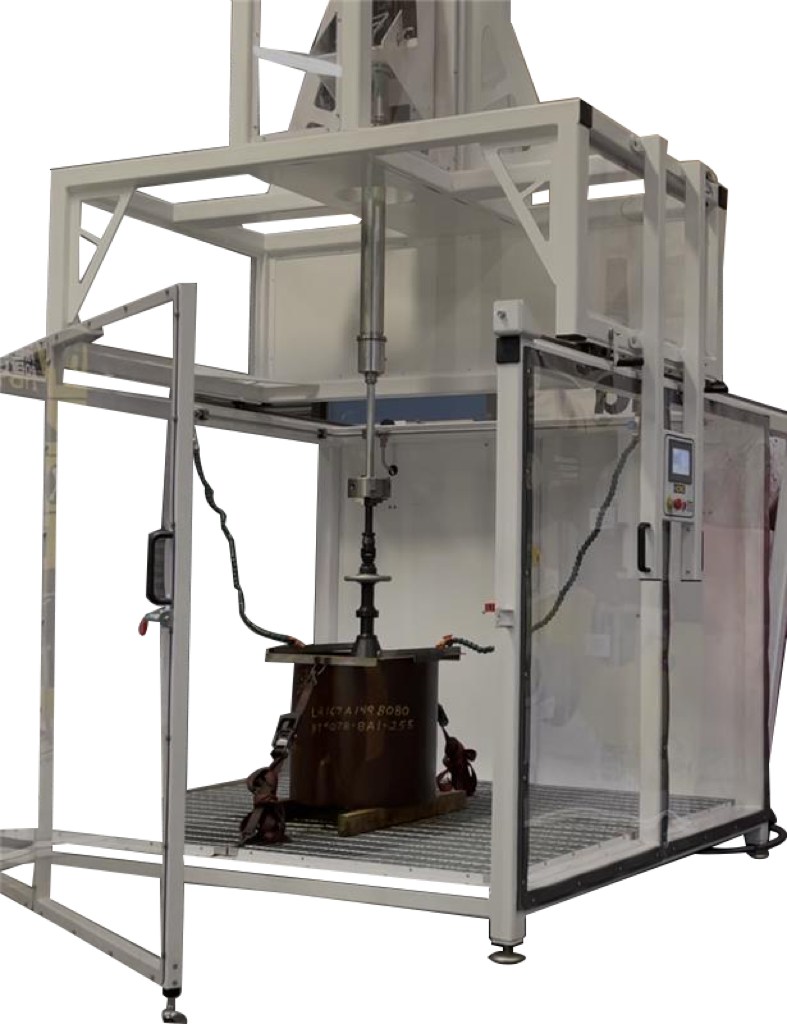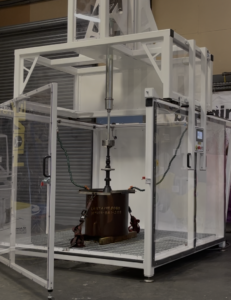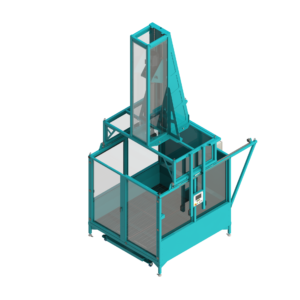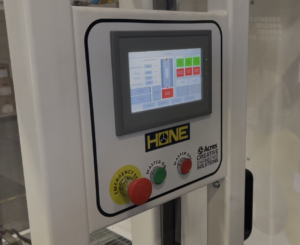Hone 2000 – Honing Machine
Hone 2000 – Honing Machine
Originally designed and manufactured for the power generation Industry, the honing machine provides a cost effective method of ensuring the highest quality bore tolerances and surface finishes are achieved. If you currently sub contract honing processes this machine adds value…
Read More
Originally designed and manufactured for the power generation Industry, the honing machine provides a cost effective method of ensuring the highest quality bore tolerances and surface finishes are achieved.
If you currently sub contract honing processes this machine adds value in terms of increased control of manufacturing process and reduced costs associated with sub-contracting.
Enquire now and add a Hone 2000 to your manufacturing capability: Talk to us today: [email protected] / 01332695240 / Contact Us Form
Please note: We can offer smaller or larger footprints with customised functionality.
The Hone 2000 honing machine has a capacity of 8m³. The honing process is a machining operation used to improve the geometric form of a surface and, in many cases, to improve the surface texture. It’s most commonly applied to the internal surfaces of metal parts, with a particular focus on cylinders, bores, and any surfaces that require a precise finish or a specific degree of smoothness.
Specification:
Maximum internal dimensions (mm): 2000 (W) x 2000 (L) x 2000 (H).
Tool head travel distance (depth in mm): 1800.
Maximum diameter of honing bore (mm): depends on honing tools.
The Hone 2000 as enough clearance to fit a maximum tool diameter of 1100mm.
Vertical travel speed (mm/s): 0-100. Controlled with HMI.
Rotation head travel speed (RPM): 0-710. Controlled with HMI.
Rotation head torque (Nm): 0-40. Controlled with HMI.
The machine will determine the max torque and allow any set point below to inputted via the HMI.
Power requirement: 415 V, 3 phase, 32 amps.
The honing tools can be attached to the tool head using a 160mm diameter self centering lathe chuck. The chuck has 3 jaws and is operated by a clamping key.
The Hone 2000 bottom frame is manufactured from 80x80x5 mm and 60x60x8mm square box section. It is mounted on heavy duty adjustable feet. It features clear panels on the sides and a front-loading gate split in half with a rod lock and an interlock that disables the machine until it is closed. The gates opens 120 degrees and have also clear panels fitted to allow visibility. It features an open grid floor with a 5mm cross made from powder coated steel to mark the centre of the loading bay.
The machine has a tray underneath to contain and collect the honing oil. It has a capacity of 200L.
The Hone 2000 features an off-line filtration system. This enables to ensure that there is no pressure drop on the output. The flow is manually controlled and it can reach up to 30L/minute. All the oil is kept together on the tray underneath the machine. The output for the unfiltered oil and the input of the filtered oil inside the machine are fitted on opposite corners, creating a flow on the tray that moves the debris to the unfiltered output. The transfer pump that connects the tray with the nozzles is fitted close to the filtered oil input to ensure the functionality. All the filtration and lubrication circuit are fitted to the bottom frame with pipes. It features an output of 2 flexible nozzles long enough to reach any part place at the centre of the bay.
Honing is a critical finishing process that enhances the dimensional accuracy and surface texture of parts. Its ability to produce precise surface finishes and correct minor imperfections makes it indispensable in industries requiring high levels of mechanical precision and performance.
Here’s an overview of how the honing process works and its applications.
How Honing Works:
- Tooling: The honing process uses a set of abrasive stones or tools that are mounted on a tool called a hone or honing head. These abrasives are selected based on the material of the workpiece and the desired finish.
- Motion: The honing tool performs a controlled, reciprocating rotary motion while it is in contact with the workpiece surface. This dual action—rotation and reciprocation—ensures the entire surface is uniformly treated.
- Material Removal: As the honing tool moves over the workpiece surface, the abrasive stones remove minute amounts of material. This material removal is very precise, allowing for tight tolerances on the dimension and surface finish.
- Surface Finish and Geometry Improvement: The honing process effectively reduces surface roughness, creating a smoother finish. It also helps in correcting some of the form errors of the holes, such as roundness and sphericity, without significantly altering the dimensions.
Applications of Honing:
- Cylinder Bores: Improving the surface finish and geometry for better sealing and performance in engines and hydraulic cylinders.
- Gear Hubs and Bearings: Creating precise fits and finishes for mechanical components.
- Air Bearing Spindles: Ensuring ultra-precise surfaces for high-speed machinery.
- Surface Finish Improvement: Any application where a high-quality surface finish is critical for the performance of the part, including aerospace, automotive, and manufacturing industries.
Advantages of Honing:
- Precision: Achieves tight tolerances and a high degree of surface finish.
- Versatility: Can be used on a wide range of materials, including hard and soft metals, ceramics, and composites.
- Surface Finish: Provides a unique cross-hatch pattern that can aid in the retention of lubrication, beneficial for moving parts.
What type of companies use Hone Machines?
Hone machines are used across various industries for precision surface finishing, especially in the manufacturing sector. They are employed for honing cylinders, bores, or surfaces in components to achieve desired geometric tolerances and surface finish. Companies in the following sectors are known to use hone machines:
- Automotive Industry: Manufacturers of engines and components use hone machines to finish cylinder bores, connecting rod holes, and other precision parts.
- Aerospace Industry: For precision finishing of aerospace components, such as turbine blades, engine components, and hydraulic systems.
- Hydraulic Equipment Manufacturers: For the finishing of hydraulic cylinders and pistons to ensure smooth operation and tight seals.
- Oil and Gas Industry: In the manufacture of components like drill bits, valve bodies, and tubes where precision and surface finish are critical.
- Medical Device Manufacturers: For finishing critical components like orthopedic implants, surgical instruments, and devices requiring high precision and surface quality.
- Engineering and Machinery: Companies producing industrial machinery and complex engineering components also utilize hone machines for precision finishing.
Specific companies known for their extensive use of hone machines include major automotive manufacturers like Ford, General Motors, and Toyota; aerospace giants such as Boeing and Airbus; and numerous specialised manufacturers in the hydraulics, medical devices, and precision engineering sectors. However, due to the vast range of applications and the proprietary nature of manufacturing processes, a comprehensive list of all companies using hone machines would be extensive and continuously evolving.
Acres design and manufacture lots of different machines.
We also manufacture access platforms, jigs and fixtures and many other types of product.
Talk to us today about your requirements: [email protected] / 01332695240 / Contact Us Form
Want to know more about Acres Engineering?
Check out our latest blog posts.
We post about our support of the Armed Forces, STEM and Charity.
We offer a range of information guides.
We make it easy to engage with us, we are approved on: JOSCAR / AVETTA / COUPA / SAP ARIBA / DEEPSTREAM….you can download our BSI / Insurance certificates here.
Follow us on social media: Facebook / LinkedIn / X / Insta
Have a design and development project you want the Acres team to look at? Can’t see what you want? Need something different?
Acres Engineering is established as a leader in delivering bespoke creative engineered solutions. Many OEM’s and tier one/ two suppliers in aerospace, automotive, rail and power generation industries have chosen us as their solutions partner because of our innovative attitude towards individual challenges and commitment to continual improvement.






